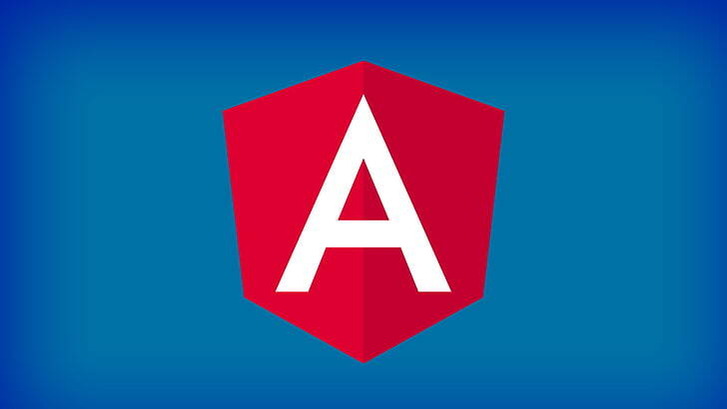Introduction to Angular
Angular is a development platform and framework for building single-page client applications using HTML and TypeScript. Angular is built using TypeScript.
AngularJS has many improvements and innovations over its predecessor, . It is easy to learn and develop enterprise-scale applications. You can build extendable, maintainable, testable, and standardized applications using Angular.
Angular provides all the core functionality that you need to develop a client application. It comes bundled with a router module, an HTTP module, a forms API, etc. We can use it to build amazing client-side applications.
Angular is built with testing in mind. When you install Angular, it will also install the Jasmine testing framework. Hence, you can get started immediately.
Angular Fundamentals
The Google Angular Team is in charge of the open-source Angular web application framework, which is TypeScript based. Millions of developers utilize this front-end framework, which is among the most well-liked, to create dynamic and interactive web applications.
Since Angular is a component-based framework, reusable components are assembled to create apps. Self-contained snippets of code with unique templates, styles, and logic are called components. This facilitates the development, testing, and maintenance of Angular apps.
Additionally, Angular has a lot of capabilities that make it perfect for creating intricate online apps, like:
- Data binding – Angular automatically updates the UI when the underlying data changes.
- Routing – Angular makes it easy to navigate between different pages in an application.
- Forms – Angular provides a powerful set of tools for building and validating forms.
- Dependency injection – Angular makes it easy to inject dependencies into components, which makes the code more modular and reusable.
The Angular CLI is a command-line tool that facilitates the creation and management of Angular projects. It can be used as a starting point for Angular projects. Additionally, the official Angular website offers additional information.
Building Feature-Rich Web Applications
From straightforward static webpages to intricate dynamic web applications, Angular is a strong and adaptable JavaScript framework that can be used to create a broad variety of online applications. Building feature-rich, highly performant, and scalable online apps is made easier with Angular’s extensive feature set and toolkit.
Angular’s salient characteristics render it appropriate for constructing feature-rich online apps.
- Component-based architecture: The component-based architecture of Angular facilitates the creation of modular and reusable code. Developers can save a tonne of time and work by simply reusing components throughout pages in an application.
- Two-way data binding: Building dynamic and interactive user interfaces is made simple by Angular’s two-way data binding functionality, which seamlessly synchronizes the data model and the display.
- Routing: The robust routing mechanism of Angular facilitates simple page navigation within an application. Large apps may perform better because to Angular’s support for lazy route loading.
- Forms: For creating and verifying forms, Angular offers an extensive toolkit. Angular forms are simple to use and make it simple to design complicated forms.
- Dependency injection: Angular’s dependency injection system makes it easy to inject dependencies into components, which makes the code more modular and reusable.
By following these tips, developers can build feature-rich and high-quality web applications with Angular.
Advanced Angular Features
Beyond the fundamentals of developing web apps, advanced Angular features offer more potent and adaptable functionalities. Among the most widely used advanced Angular features are:
- Templates: The data bindings that go along with HTML elements are defined by means of Angular templates. Developers can employ complex expressions, directives, and components to construct intricate user interfaces using advanced Angular templates.
- Components: Self-contained building blocks known as angular components can be utilized to construct intricate user interfaces. It is possible to design intricate hierarchies by nesting components inside other components. Advanced Angular components can be used to construct extremely dynamic and interactive user interfaces by utilizing state management, dependency injection, and lifecycle hooks.
- Routing: The various pages and routes of a web application can be defined by developers using Angular Routing. The efficiency of large apps can be enhanced by utilizing advanced Angular routing features like preloading and lazy loading.
- Forms: Angular forms offer a strong and adaptable method for gathering and verifying user input. Complex and sophisticated forms can be created by utilizing advanced Angular forms features like template-driven and reactive forms.
- Services: Shared functionality between several components is provided by Angular services. Robust and scalable applications can be created using advanced Angular services by utilizing state management and dependency injection.
Conclusion
With the help of the powerful Angular JavaScript framework, developers can easily create dynamic, feature-rich web applications. Web development is made easier by its comprehensive toolkit, two-way data binding, and component-based architecture. Angular is a great option for creating cutting-edge web apps with complex UIs and interactive elements because of its vibrant community, regular updates, and Google’s backing.Read about our other post at codingshikho.com
